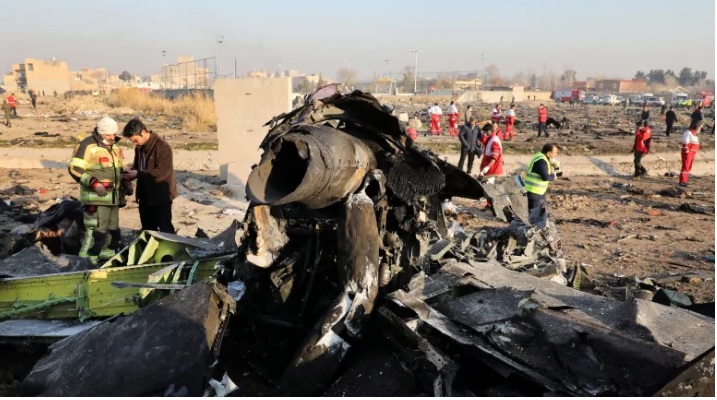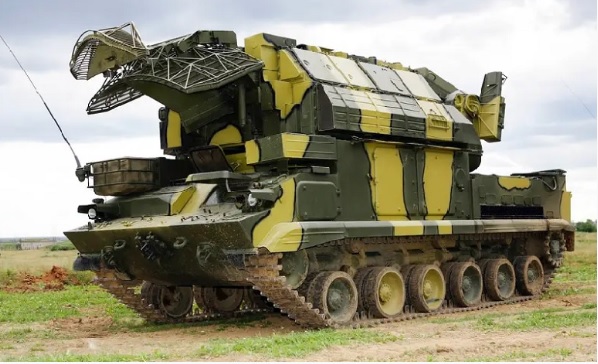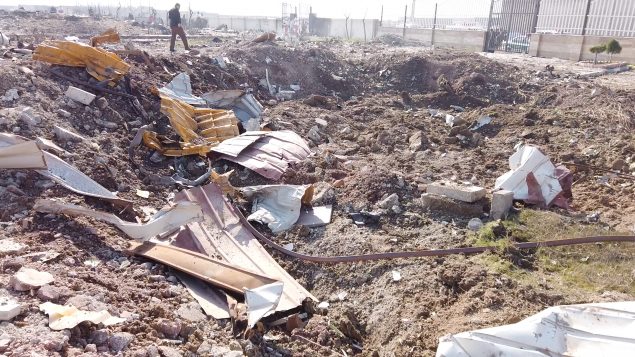Four Canadians are part of a team of six managers and experts from the UN’s Montreal-based International Civil Aviation Organization that has joined the investigation into the downing of Flight PS752.
The Ukraine International Airlines Kyiv-bound flight was shot out of the sky just minutes after leaving Tehran’s international airport on Jan. 8.
All 176 people aboard the flight were killed, including 57 Canadians–29 of whom were permanent residents in Canada.
Of the 176 people on board, 138 people aboard the Boeing 737-800 jet were heading to Kyiv to make connections for flights to Canada.
Eighty-two 82 Iranians, 11 Ukrainians and nationals of Sweden, Afghanistan and Germany also died.

A team of six managers and experts, including four Canadians, from the UN’s International Civil Aviation Organization has joined the investigation into the downing of Flight PS752 to advise and monitor Iran and other countries involved in the probe. (Ebrahim Noroozi/Associated Press)
The ICAO team is advising and observing Iran’s investigation to make sure Tehran complies with international requirements, something the international community, including Canada, has been pressing for.
Four of the six senior and technical staff ICAO has assigned to the case are based in Montreal.
UN officials also said ICAO will review the issue of passenger planes flying in conflict zones.
The downing of Flight PS752 came just hours after Iran had carried out air strikes against to military bases in Iraq in retaliation for the killing of Revolutionary Guard Gen. Qassem Soleimani.
Canadians were stationed at one of the bases.
Meanwhile, Iran says it has asked U.S. and French authorities for equipment to download the black boxes from the downed jet, saying the flight recorders sustained physical damage in the crash but their memory is intact.
A report from the authority says some parts are needed to repair the damage and this will ensure the data from the black boxes is analysed in Iran.
Iran says it sent a request to the Bureau of Enquiry and Analysis for Civil Aviation Safety in France and the National Transportation Safety Board in the U.S., but neither has responded positively.

A Tor-M1 Surface to air missile launcher, front radar folded down during movement. The missiles are launched out of the top of the vehicle (AP Photo)
However, a new preliminary report by Iran’s Civil Aviation Organization stopped short of blaming the the missiles for the crash.
“The impact of these missiles,” the report said, was still being assessed.
For days after the jet crashed, Iran denied that it had fired missiles at the plane, blaming a technical malfunction and engine fire for the crash.
With files from CBC(Ashley Burke), AP, Reuters, BBC, RCI







For reasons beyond our control, and for an undetermined period of time, our comment section is now closed. However, our social networks remain open to your contributions.